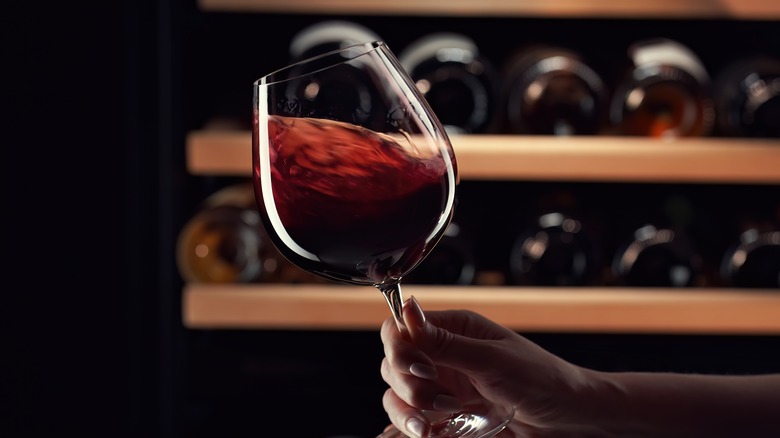Swirling Your Wine Matters More Than You'd Think
Whether you are a total wine enthusiast or you buy wine based solely on how pretty the label is, you probably have found yourself swirling a glass of wine at a tasting before taking a sip. While it definitely makes us feel fancy to let our drink dance around ever so slightly, does it actually do anything to the wine or are we risking a stain just for aesthetics? Apparently, this habit that has been practiced by wine drinkers for generations actually plays an important role in ensuring each sip of wine is as tasty as possible.
Daily Meal received exclusive insight on the importance of wine swirling from Nicki McTague, president of Infinite Monkey Theorem, a women-owned-and-operated winery based in Denver, Colorado. According to this certified wine expert, "Swirling opens up the wines and allows you to better capture the smell and taste." Gently rotating your wine around in your glass prior to sipping and then again after each additional drink can transform the beverage in ways that even the most inexperienced wine drinker will be able to notice and enjoy.
Pay attention to how your wine evolves after swirling
You may have heard of the term "aeration" being thrown around amongst your oenophile friends. This process is important because the beverage can take on different flavor profiles depending on its level of oxygen exposure. Swirling your wine slightly inside of your glass before sipping allows your wine to "breathe" in a way that conducts further aeration. The tannins in wine also benefit from circulation within the glass as this leaves your wine with a noticeably smoother feel and richer taste. This is why not letting red wine breathe is one of the major wine drinking mistakes.
Wine expert Nicki McTague also encourages wine drinkers to pay close attention to the wine's color and smell after swirling, as this can indicate subtle notes and flavors that may have been hiding prior to a good spin around the glass. You may notice that a wine that has been swirled will appear lighter in color than it seemed upon initial pouring due to the dissipating sulfates that mixed with oxygen. Aroma also plays a major impact on your wine's taste, so give your wine a good sniff after swirling as the aroma compounds are released into the air. This knowledge will not only impress your friends at your next happy hour, but it will also encourage you to slow down and swirl your wine slightly before each sip as you look for subtle changes in flavor and texture.

